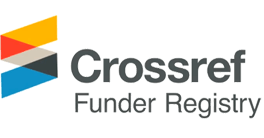Research and Publication Ethics
Research and Publication Ethics
Table of contents
B. Authorship and Contributorship
C. Co-author with a Special Relationship
D. Originality, Plagiarism, and Duplicate Publication
F. Author Disclosure of Conflict of Interest
I. Statement of the Use of Sex and Gender
J. Statement of Human and Animal Right
K. Statement of Informed Consent and Institutional Review Board Approval
L. Registration of Clinical Trials
O. Process for Managing Publication Misconduct
The Journal of implantology and applied sciences follows the “Recommendations for the Conduct, Reporting, Editing and Publication of Scholarly Work in Medical Journals” (http://www.icmje.org/icmje-recommendations.pdf) from International Committee of Medical Journal Editors (ICMJE). For the issues not stated in these instructions, the authors can refer to the Principles of Transparency and Best Practice in Scholarly Publishing (joint statement by COPE, DOAJ, WAME, and OASPA; http://doaj.org/bestpractice).
A. Purpose
This code of research and publication ethics (hereinafter abbreviated as Code of Ethics) is based on the KAOMI regulations. Its purpose is to prescribe ethical principles and standards.
∙ Researchers prepare necessary policies to effectively deal with issues related to bioethics and safety that may arise in the development and use of dentistry and life science technology.
∙ Researchers, clinicians, developers shall ensure that life science and technology do not infringe on human dignity and value and conform to bioethics and safety.
B. Authorship and Contributorship
The Journal of implantology and applied sciences defines an “author” as a person whose participation in the work is sufficient for taking public responsibility for all portions of the content. Specifically, all authors should have made substantial contributions to all of the following:
∙ Conception and design of the study, acquisition of the data, or analysis and interpretation of the data
∙ Drafting of the article or revisioning it critically for important intellectual content
∙ Final approval of the version to be submitted
∙ Agreement to be accountable for all aspects of the work in ensuring that questions related to the accuracy or integrity of any part of the work are appropriately investigated and resolved.
Authors should meet all of these four conditions. When authorship is attributed to a group, all authors must meet the listed criteria and be responsible for the work’s quality, accuracy, and ethics. All authors must participate in determining the order of authorship. Science Editing does not allow multiple corresponding authors for one article.
C. Co-author with a Special Relationship
1) If the co-author of the submitted manuscript is a minor or has a special relationship with a relative within the fourth cousin, such as a spouse or child, the manuscript cannot be submitted. However, an exception is made in cases where a person has a doctoral degree in the same or similar field to the submitted manuscript and has given prior consent to the provision of personal information.
2) For further information, the 「Recommendations for preventing unfair authorship of research papers」 (revised on April 10, 2020) shall comply.
D. Originality, Plagiarism, and Duplicate Publication
Submitted manuscripts must not have been previously published or be under consideration for publication elsewhere. Submitted manuscripts are screened for possible plagiarism or duplicate publication by Similarity Check upon arrival. Any manuscript with similar or near similar hypothesis, sample characteristics, methodology, results, and conclusions to a published article is a duplicate article and prohibited. There will be penalties for the authors. A letter of permission is required for all material that has been published previously. It is the author’s responsibility to request permission from the publisher for any material (text, figure, and table) that is being reproduced.
E. Secondary Publication
It is possible to republish manuscripts if it satisfies the condition of secondary publication of the “Uniform Requirements for Manuscripts Submitted to Biomedical Journals: Writing and Editing for Biomedical Publication” (http://www.icmje.org) updated October 2008.
F. Author Disclosure of Conflict of Interest
Each author must disclose all potential conflicts of interest (COI) by completing Journal of implantology and applied sciences COI disclosure form. A COI is a financial relationship or another set of circumstances that may affect or may reasonably be thought by others to affect an author’s judgment, conduct, or manuscript. Examples of potential conflicts of interest include employment, consultation, stock ownership, cash reward, paid professional testimony, patent applications/registrations, and other support for research grants. A COI exists based on the author’s circumstances; the author’s behavior, subjective beliefs, and outcomes are irrelevant. In other words, the author must disclose a COI even when the circumstances have not influenced the author’s actions or manuscript. Moreover, even when the author believes that the circumstances cannot affect the actions or manuscript. When a manuscript is accepted for publication, Editorial Board will determine the parts of an author’s disclosure published with the manuscript.
G. Source of Funding
All sources of funding applicable to the study should be explicitly stated. In the case of a paper prepared with the support of research funds, the content shall be written in the acknowledgment section.
H. Copyright
The copyright of any paper published in this journal shall be held by the KAOMI. By submitting an application for manuscript publication signed to agree to the regulations for contribution, the copyright of the paper comes under the ownership of the KAOMI. Suppose papers closely related to the submitted manuscript have been published or submitted for publication elsewhere. In that case, the author must state this in the cover letter.
I. Statement of the Use of Sex and Gender
Ensure correct use of the terms sex (when reporting biological factors) and gender (identity, psychosocial or cultural factors). Moreover, unless inappropriate, report the sex and/or gender of study participants, the sex of animals or cells, and describe the methods used to determine sex and gender. Suppose the study involved an entire population, for example, in only cases (e.g., prostate cancer). In that case, authors should define how they determined race and ethnicity and justify their relevance.
J. Statement of Human and Animal Right
Studies on human beings must comply with the Principles for Medical Research Involving Human Subjects based on the Declaration of Helsinki and its recommendations guiding physicians in biomedical research involving human subjects (adopted at Helsinki (1964) and amended by the 29th, 35th, 41st, 52nd, 53rd, 55th, 59th, and 64th World Medical Association General Assembly (recently at Fortaleza, 2013). It is available from: https://www.wma.net/policies-post/wma-declaration-of-helsinki-ethical-principles-for-medical-research-involving-human-subjects/. Human studies that do not meet the Helsinki Declaration will not be considered for publication. Authors should conduct a study based on the National or Institutional Guide for the Care and Use of Laboratory Animals for animal subjects.
K. Statement of Informed Consent and Institutional Review Board Approval
To satisfy this requirement, authors must get informed consent from the study participants. An IRB must have approved study protocols for clinical studies. Authors must state that they have received an IRB approval or a statement from the committee that IRB approval was unnecessary.
L. Registration of Clinical Trials
Any research that deals with a clinical trial should be registered with a primary national clinical trial registration site such as https://cris.nih.go.kr/, or other sites accredited by the WHO or the ICMJE.
M. Advertising Policy
Advertisements may promote information and technologies relevant to authors, editors, reviewers, and readers. Any individuals or organizations interested in advertising their products or services in the print copies of the journal are encouraged to contact the editorial office. The editorial board will discuss the acceptance of advertisements; ultimate approval resides with the publisher.
N. Research Ethics Council
∙ Composition and Resolution: The research ethics council consists of 5 or more members. The Editor-in-Chief appoints the members with the recommendation of the Editorial Board. The research ethics council has one chairperson, and the chairperson is elected. The research ethics council decides with the consent of two-thirds of the total members.
∙ Council’s Authority: The research ethics council conducts investigations on cases reported as violations of the Code of Ethics through the reporter, examinee, witness, referee, and evidence materials and reports the results to the Editor-in-Chief. Suppose the violation of originality, plagiarism, and duplicate publication is determined to be true. In that case, the chairperson may recommend appropriate sanctions to the president.
∙ Investigation and Deliberation: The authors reported to have violated the Code of Ethics shall cooperate with the investigation conducted by the research ethics council. Failure to cooperate with this investigation is itself a violation of the Code of Ethics.
∙ Guarantee of Opportunity to Explain: The research ethics council shall give the authors who have been reported as violating the Code of Ethics a sufficient opportunity to explain.
∙ Procedures of Sanctions for Violations of the Code of Ethics: When there is a report or suggestion of sanctions by the research ethics council on the authors, the Editor-in-Chief must convene the Editorial Board. Moreover, follow-up measures such as the content of sanctions should be decided. Suppose the Editorial Board decides to sanction authors who violate the rules. In that case, the following sanctions may be imposed according to the severity of the violation.
- If the manuscript has not been published before being published in the journal, its publication is not permitted.
- If the manuscript has been published in the journal, retroactive invalidation of the article’s publication is conducted.
- Prohibition of publication of papers in the journal for the next three years
Suppose the Editorial Board decides to ban the retrospective nullification of the publication. In that case, the fact is notified to the official research achievement management organization and publicly announced through other appropriate methods. Suppose the Editorial Board decides not to impose sanctions. In that case, it must notify the research ethics council, the reporter, and the respondent without delay. Suppose it is decided to sanction the author and the violation is severe. In that case, the editorial committee may decide the content of the disciplinary action and propose it to the academy general meeting. Disciplinary procedures after disciplinary action follow the KAOMI regulations.
O. Process for Managing Publication Misconduct
When the Editorial Board encounters the suspected cases of publication misconduct such as duplicate publication, plagiarism, fraudulent data, undisclosed conflict of interest, changes in authorship, a reviewer who has appropriated an author’s idea or data, and any complaints, the resolution process will follow the flowchart provided by the Committee on Publication Ethics (COPE) (http://publicationethics.org/resources/flowcharts). The Editorial Board carries out the discussion and decision on the suspected cases.
P. Editorial Responsibilities
The Editorial Board will continuously monitor the publication ethics:
∙ guidelines for retracting articles
∙ maintenance of the integrity of the academic record
∙ publishing corrections, clarifications, retractions, and apologies when needed
∙ excluding plagiarism and fraudulent data
The editors maintain the following responsibilities: responsibility and authority to reject and accept articles; avoiding any conflict of interest; promoting the publication of corrections or retractions when errors are found; and preservation of the anonymity of reviewers.


 Journal of implantology and applied sciences
Journal of implantology and applied sciences










